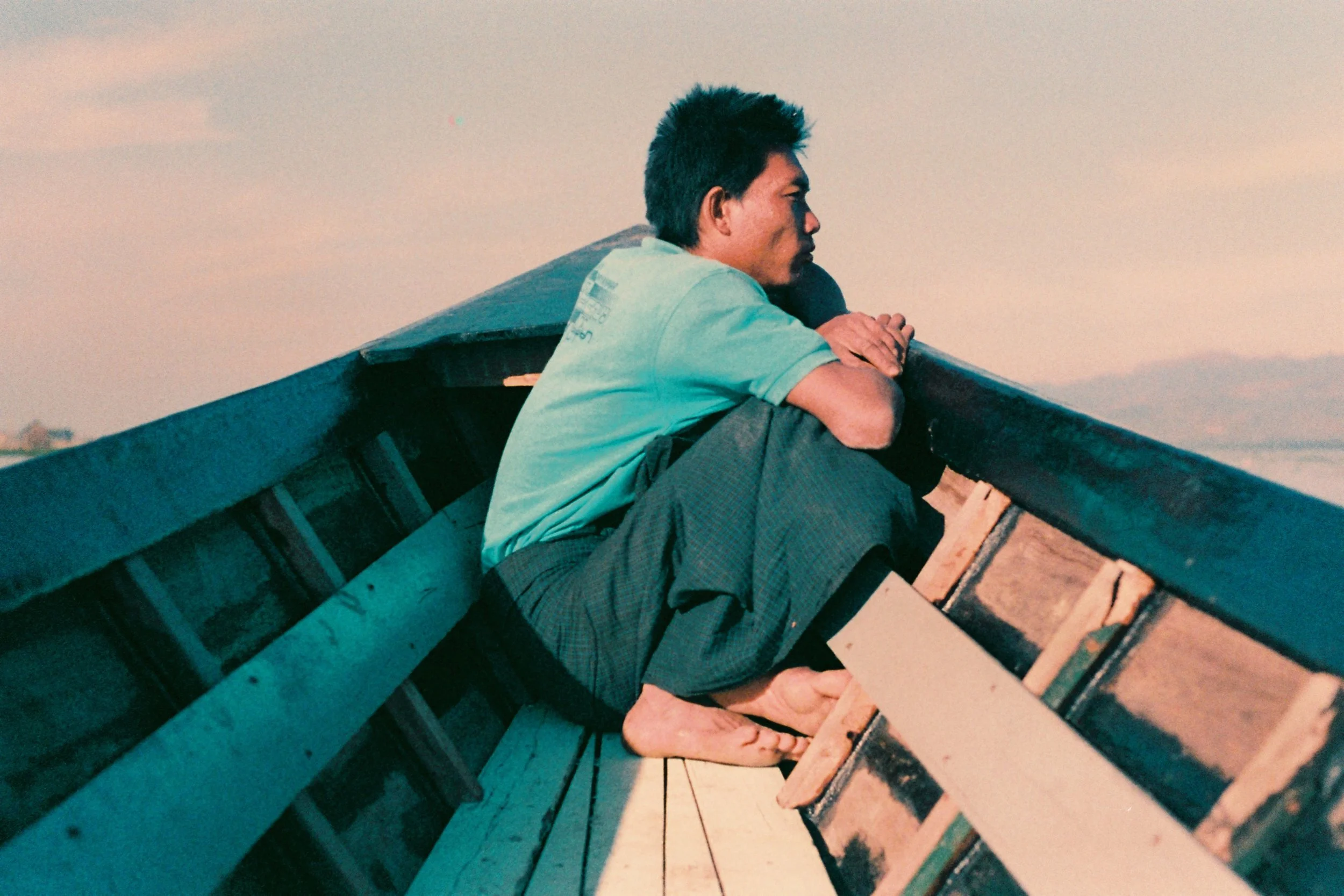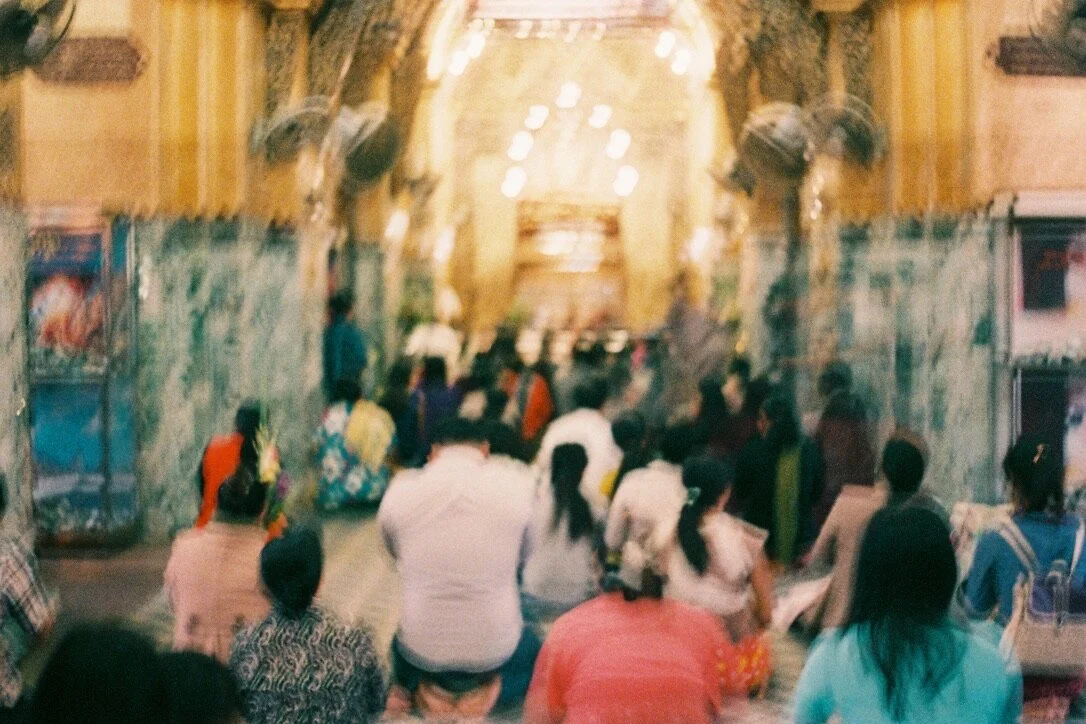The fellows’ voices
Mobile money in Senegal illustrates leapfrogging’s promise and limits. Freed from legacy systems, platforms like Wave and Orange Money expand inclusion via agent networks, enabling payments, remittances, and microcredit. Yet adoption creates uneven access, relies on imported phones, foreign telecoms, and offshore data centers, embedding dependency and potential digital colonialism. Evidence shows income and resilience gains, but long‑term development hinges on control of infrastructure, data sovereignty, and local capability building. Without structural transformation and supportive international conditions, reliance on external capital and technology can deepen vulnerabilities. Foresight and governance should steer innovation toward resilience, equity, and agency, not extraction alone.
One month after the Future of Aid 2040 report launch in New Delhi, hosted by IARAN, START Network, CHL, and the Humanitarian Hub, discussions continue across Berlin and Bogotá. The report envisions a reimagined aid system by 2040 centered on inclusivity, local leadership, and collective action. Key voices—including Sneha Mishra, Anuj Tiwari, Rajesh Kapoor, Vasundhara Pandey, and Manu Gupta—called for equitable resource distribution, decentralized decision-making, and stronger community ownership. AIDMI emphasized integrating local knowledge and the evolving role of AI to enhance future aid delivery and resilience.
“The baby is in our hands — and I am terrified.
The fight to gain power was one challenge. The responsibility that follows is far greater. Leadership has shifted to local CSOs, but no resources came with it. No plan for capacity strengthening. No donor message saying, ‘This is the system you must support.’ If we create babies malnourished from the start, we risk watching them die before they grow — and the true victims will be the communities we serve.”
— Puji Pujiono, Senior Adviser, Pujiono Centre
Following a 2022 coup, Burkina Faso's leader, Ibrahim Traoré, has championed pan-African and anti-imperialist movement. He's nationalized mining assets and established state-owned companies, rejecting international institutions like the IMF. Traoré's government has also expelled French troops and formed new alliances, including with Russia. These policies reflect a broader pushback against neocolonial influence, aiming for self-sufficiency and regional solidarity, although risks like corruption and new dependencies are a concern.
In a world facing "polycrisis"—overlapping, prolonged crises—the real challenge isn't just the shocks themselves, but our collective inability to perceive and respond to them effectively. These crises, whether economic or environmental, build up slowly and unnoticed until they reach a breaking point. As John Maynard Keynes observed, the public often overreacts with "excessive fears" to events they previously ignored, showing a lack of "reasonable anxiety" when it was needed. Economist Gabriel Palma described a three-phase cycle: a period of "lack-of-awareness" where problems grow, followed by a moment of "awareness" and panic, which ultimately gives way to a "new form of lack-of-awareness" where the initial fear fades and the underlying issues are forgotten again. This cycle of denial and reaction makes it difficult for societies to address the root causes, leading to flawed, reactive policies instead of lasting structural repairs.
The international aid system faces unprecedented transformation. INGOs must adapt to a fragmented, polycentric aid landscape marked by shrinking funding, localization pressures, and emerging local actors. Human Resources (HR) functions are central to this shift. Outsourcing HR is no longer a stopgap but a strategic response—enhancing flexibility, cost control, and quality. Decentralizing HR empowers field operations while preserving organizational coherence. Internal HR evolves into a strategic steward, focusing on talent management and organizational values. As humanitarian aid becomes more territorial and fragmented, robust, adaptive HR models will be vital to sustain impact and relevance in an uncertain future.
Amid systemic disruption and the unraveling of traditional aid paradigms, a transformative form of leadership is emerging from the Global South. Rooted in Indigenous knowledge, communal values, and contextual intelligence, this leadership model challenges entrenched power asymmetries and redefines humanitarian effectiveness. It does not seek to replicate Northern models, but instead cultivates authentic, regionally grounded responses shaped by collective wisdom and mutual accountability. This new leadership embraces complexity, fosters North-South symbiosis, and prepares for an increasingly multipolar humanitarian landscape. In doing so, it offers not only adaptation—but the foundation for a more just, inclusive, and sustainable future for humanitarian action.
In light of recent geopolitical shifts, the humanitarian sector is experiencing significant changes. The « To Each Their Playing Field » scenario from The Future of Aid: INGOs in 2030 report anticipates a fragmented humanitarian landscape, with decentralized responses and diverse actors beyond traditional INGOs. To remain relevant, INGOs must accelerate localization efforts, empowering regional partners and redefining their value propositions. This transformation is crucial to effectively navigate the complexities of a multipolar world and continue delivering impactful humanitarian assistance.
In our digital era, safeguarding personal data is a challenge for everyone, but for refugees, it’s a matter of survival. Aid organizations and governments often hold sensitive information, from birthdates to fingerprints, to provide critical assistance. However, mismanagement of these systems can lead to severe consequences, such as discrimination or exploitation. Refugees face unique vulnerabilities as they cross borders, navigating diverse legal frameworks with inconsistent protections. To ensure their safety and dignity, privacy protections must evolve. Emerging technologies like blockchain and unified global standards offer promising solutions, empowering refugees to control their data and ensuring their privacy across borders.
NGOs today need modernized structures and governance to remain effective and competitive. A proactive approach to risk management—covering identification, assessment, mitigation, and monitoring of risks like cybersecurity, climate change, and ESG factors—is essential for resilience. Governance within ESG is especially vital for sustainable financing. Transparency and compliance, alongside skills in strategic planning and risk management, strengthen reputation and stakeholder trust. As NGOs adapt to a rapidly changing environment, a tailored risk management approach helps ensure operational stability, financial health, and the continued effectiveness of their missions amidst complex global challenges.
The article titled "Navigating the Triple Nexus: Leveraging Diplomatic Synergies for Health Systems Strengthening" addresses the vital interplay between diplomacy and health system support in conflict-ridden areas. Through the lens of Humanitarian Diplomacy (HD) and Global Health Diplomacy (GHD), the piece advocates for a nuanced, integrated approach embodied by the Humanitarian-Development-Peace Nexus. This approach seeks to unify immediate relief with long-term development and peace efforts, using diplomacy as a tool to navigate the complex challenges faced by health systems in such settings, thereby ensuring sustainable health improvements and the safeguarding of human rights.
In this article, Miguel Castillo, a healthcare professional with over 10 years of experience at field level and hospital-based facilities in conflict-affected, developing and western countries, discusses his experience during the Rohingya crisis, highlighting the critical role of digital solutions in enhancing healthcare in humanitarian settings. The COVID-19 pandemic accelerated the adoption of such technologies, improving healthcare coverage globally, including in crisis-affected areas. The focus is on the digital transformation of health services, emphasizing the importance of technological infrastructure and the challenges in transitioning to digital systems. Key aspects include the expansion of 5G technology and increased smartphone accessibility, especially in low-and-middle-income countries. The article projects a significant rise in smartphone adoption by 2030, driven by affordability, and explores how these advancements improve health coverage in humanitarian situations.
The following article is a personal story from our fellow Mariana Merelo: In the winter of 2019, after two decades as a humanitarian and development practitioner, Mariana found questioning her role in driving systemic change within the humanitarian ecosystem. Despite being surrounded by passionate change-makers, including foresight experts, partnership advocates, and local champions, she felt stuck in the wrong vehicle for change. Mariana had worked for a prominent INGO, which espoused a commitment to empower local actors and crisis-affected communities in decision-making and emergency responses. However, a glaring gap existed between the organization's rhetoric and tangible actions. It was not until she found collaborative foresight, as a co-created and co-evolving approach to explore alternative futures that she found a response to the previous challenge.
While anti-corruption efforts are on the rise, challenges persist, including declining global peace, weakening democracies, a shift to a multipolar world, cybersecurity threats, declining ethical standards, and evolving technology. Despite these obstacles, there's a growing global focus on anti-corruption measures, with organizations and governments working together. However, the future remains uncertain, with potential developments like AI-driven corruption and innovative technologies offering both risks and opportunities.
Mexico's demographic shift from a youthful population to an aging society by 2050 brings both challenges and opportunities. The median age is projected to rise from 27.9 to 42 years. Scenarios include a "Growth Scenario" with economic strength but pension system concerns, a "Collapse Scenario" depicting institutional breakdown and grassroots responses, a "Limits & Discipline Scenario" with elderly power leading to youth drain, and a "Transformation Scenario" driven by comprehensive reforms and a care economy. Proactive measures like nurturing a "silver economy," migrant integration, and financial education are recommended to shape a favorable future amid demographic changes.
Save the Children Italia is undergoing a strategic transformation guided by IARAN to navigate contemporary multidimensional shifts. Engaging around 100 staff, the organization employs a foresight-based approach to explore potential future contexts until 2030. Through a collaborative process, key drivers have been identified and detailed in "Driver Files." This article narrates the example of "Geopolitical Shifts" and highlights the evolving global political landscape's impact on democracy, civil liberties, populism, and international relations. This exercise encourages systemic thinking, breaks silos, and challenges hierarchical dynamics, emphasizing collective intelligence to inform strategic choices and adapt to a changing world.
"Unleashing Local Potential: Advancing Aid Localization in Ukraine" delves into the critical importance of bringing power and resources closer to the communities in need. The article highlights the crisis in Ukraine as a turning point for advancing the localization agenda in humanitarian aid. By recognizing the capabilities of local actors and addressing the challenges they face, the article advocates for a transformative approach that empowers Ukrainian civil society and fosters effective localization of aid.
Innovation in the humanitarian sector is a challenging journey, often hindered by cultural resistance. However, with a transformation strategy, leadership support, and a culture open to change, these obstacles can be overcome. Strategic foresight, which anticipates future trends and proactively develops solutions, can greatly enhance this process. External pressures, like the COVID-19 pandemic, can also catalyze cultural transformation, prompting organizations to rethink traditional ways and embrace innovation.
The world is facing a severe economic downturn, but the flow of remittances has been relatively stable and continues to provide support for many families in low and middle-income countries. According to the World Bank, global remittance flows reached $626 billion in 2022, an increase of 5% from the previous year. This growth is smaller than in previous years, but it is significant given the economic outlook. Investing in livelihoods support for migrants in high-income countries could be an effective way of supporting communities globally.
The humanitarian ecosystem is failing to adapt to global transformations and new types of crises. This failure is rooted in the opportunistic nature of ODA flow governance and the entrenched value chain of formal humanitarian actors. To break free from this short-termism trap, the humanitarian ecosystem must shift its approach and values, prioritizing the needs and voices of those affected by humanitarian crises. Only then can it fulfill its potential to provide effective and lasting assistance.
Two years of huge emergency after huge emergency - from the Covid-19 pandemic’s various variants to evacuations from Afghanistan and a series of storms battering the UK - our people are tired, yet the need for humanitarian aid continues to grow. And then the Ukraine crisis boiled over.
We have always struggled to plan for the many uncertainties the future may bring, but the massive disruptions of the last couple of years made us realise that grappling with uncertainty is not an option.
The British Red Cross’s Strategic Insight and Foresight team has been developing a way to rapidly construct scenarios about the future, helping our teams get a sense of likely people’s short-term and longer-term humanitarian needs, as well as the potential ripple effects caused by a crisis.
Evaluations of humanitarian interventions can broadly be divided into two categories: process and impact. While a process evaluation seeks to examine how the intervention was delivered and if the conduct or context influenced the outcome, an impact evaluation seeks to understand the causality between the intervention and the “positive and negative, primary and secondary long-term effects produced …, directly or indirectly, intended or unintended” (OECD-DAC 2010), in short, the impact. In my experience, this is the more commonly requested type of evaluation, particularly from, and to reassure, donors, who above all want to see and share tangible results.
Along with other organisations in the formal humanitarian aid sector, the way in which large INGOS operate has been under challenge for some time. They have been legitimately criticised for holding nearly all decision-making in programme design and financial power at international level in their “Global North” headquarters, while engaging with national and local partners in the “Global South” in sub-contracting relationships. The need for reform or even transformation is broadly defined as “localisation” – the shifting of power to the “South” and the “local.” Recently, the issue has taken on a new urgency due to practical challenges to traditional operating models posed by the Covid-19 pandemic, and moral-ethical challenges posed by a renewed focus on racial discrimination and injustices, alongside continued concerns about gender equity in the sector.
Are you unsure about how technology may be able to help you to achieve your humanitarian sector objectives? Do you want to understand where emerging and existing technologies can assist people that are in need?
Matt Twilley would like to share with you some of his experiences and open up some ideas on how potentially the use of technology in the right way can give you more opportunity to really help those in need.
Los actores humanitarios no pueden seguir reproduciendo modelos reaccionarios que al final benefician a las OING y no a las personas afectadas por las crisis. Una forma de hacerlo es dejar de reaccionar a cada crisis que surge de la nada.
Acabar con los encierros es, como lo define Paul Watzlawick, “una ultra-solución”: un intento de arreglar un problema deshaciéndose de todo lo que tenga que ver con el mismo. Al caer en esta trampa, los gobiernos están utilizando la ultra-solución, arriesgándose a destruir tanto la economía, como la vida de las personas al final del túnel.
Lockdowns are what Paul Watzlawick defines as “an ultra-solution”: an attempt to fix a problem by getting rid of it and everything that goes with it. Falling into this trap, governments are at risk of destroying both the economy and peoples lives.
L’homophobie est entendue comme les discriminations de tous ordres à l’encontre des personnes LGBT (lesbiennes, gays, bisexuelles et transgenres). Si «l’homophobie politique» est déjà connue en tant qu’outil de duplicité en politique intérieure, Michel Maietta explore davantage son pouvoir de manipulation, jusqu’à sa dimension géopolitique. L’auteur nous rappelle à quel point la protection des droits des personnes LGBT revêt une importance stratégique dans la défense plus large des droits de l’homme.
Is it possible to use foresight analysis to tackle the geopolitics of homophobia? Michel Maietta discusses the progress made so far and how the futures technique could be beneficial to decriminalizing homosexuality everywhere






























Afghanistan is one of the countries that received the highest amount of ODI over the past 20 years, yet poverty has lately been on the rise. Aid is heavily politicized and the fight against corruption has shown limited success. Consequently, the aid sector is affected by a fundamental lack of trust: high ranking officials of the Afghan government have repeatedly expressed their distrust of aid actors